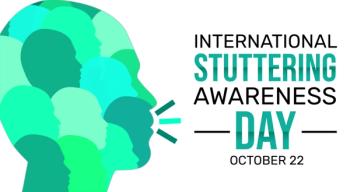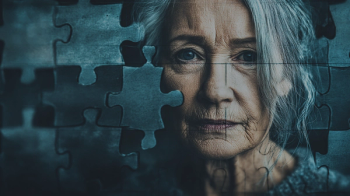
- Vol 31 No 4
- Volume 31
- Issue 4
Creativity and Mental Illness
Since the terms “genius” and “creativity” have different definitions, Psychiatric Times asked a neuropsychologist and creativity expert to clarify how the terms are being used in scientific studies.
Recent large-scale registry and brain imaging studies are exploring the validity of this ancient observation, which linked creativity/genius and psychopathology. The results are mixed. Since the terms “genius” and “creativity” have different definitions, Psychiatric Times asked neuropsychologist and creativity expert Rex Jung, PhD, Assistant Professor in the Department of Neurosurgery, University of New Mexico, to clarify how the terms are being used in scientific studies.
According to Jung, the best definition of creativity is found in a 1953 article1: creativity is defined as the production of something novel and useful. “This dynamic tension between novelty and usefulness likely has important neural correlates that we are attempting to explore with neuroimaging techniques,” said Jung.
“Genius,” he added, “is achievement at the far margins of human expression (eg, creative, intellectual, leadership). It involves production of extraordinary accomplishment and creative capacity that is exceedingly novel and breathtakingly useful. This capacity is, by definition, rare in spite of the tendency to sprinkle the term liberally throughout our daily endeavors. It is hypothesized to occur at the exceedingly rare rate of 1 per 1 million individuals, which implies that there are fewer than 7000 geniuses on the entire planet.”
Controversy
The idea that creativity and psychopathology are inextricably linked is widespread but highly controversial. R. Keith Sawyer, PhD, Morgan Distinguished Professor in Educational Innovations at the University of North Carolina at Chapel Hill, cited several studies that examined creative individuals.2 “None of these studies found an elevated degree of mental illness in creative people.”
Simon Kyaga, MD, a senior consultant in psychiatry and PhD student in the Department for Medical Epidemiology and Biostatistics at the Karolinska Institute in Stockholm, contends that early studies by Andreasen,3 Jamison,4 and Karlsson,5 which focused on schizophrenia and bipolar disorder, have provided limited empirical evidence for the relationship between creativity and psychopathology. The problem may be that many earlier studies have been small and/or were done retrospectively.
Kyaga has been lead investigator on 2 Swedish studies on the association between creativity and psychopathology. “The main strengths of our studies are that they involve a lot of people, and while the analysis is retrospective, the collection of data is prospective.”
The researchers undertook a nested case-control study using longitudinal Swedish total population registries.6 Individuals who had received inpatient treatment for schizophrenia, bipolar disorder, and unipolar disorder and their relatives without the disorders were compared with controls. As a proxy for creativity, the researchers used occupational codes and census information. Artistic and scientific occupations were defined as “creative” and included university teachers, authors, visual artists, photographers, composers and musicians, designers, and performing artists.
The researchers found an increase in creative occupations among individuals with bipolar disorder and among relatives of patients with schizophrenia and bipolar disorder. No association was found for unipolar depression.
The second study involved 1.2 million patients and their relatives without psychiatric diagnoses compared with controls.7 The earlier study was expanded by adding other psychiatric disorders and including discharge diagnoses for inpatient treatment between 1973 and 2009 as well as some outpatient episodes from 2001 to 2009.
With the exception of bipolar disorder, no association between psychopathology and overall creativity was found. On the contrary, creative professionals had a reduced likelihood of having schizophrenia, schizoaffective disorder, unipolar depression, anxiety disorders, alcohol or drug abuse, autism, or ADHD. However, the team observed that the siblings of patients with autism and first-degree relatives of patients with schizophrenia, bipolar disorder, and anorexia nervosa were over-represented in the creative professions.
“I would say our findings on autism are a bit shaky, although there is some literature suggesting an association between scientific occupations and autism,” Kyaga said. “There is no literature suggesting an association between anorexia and creativity, and I have to say we really didn’t know what to do with that.”
Aware that findings from earlier studies suggest a higher prevalence of psychopathology among professional authors, Kyaga and colleagues looked at that group separately. They found that authors suffered from schizophrenia and bipolar disorder more than twice as often as controls. In addition, compared with controls, authors were more likely to have unipolar depression, anxiety disorders, and alcohol or drug abuse disorders, and to commit suicide.
Neuroscience
The study of creativity is a “growth industry” for cognitive neuroscientists, according to Jung. For example, Fink and colleagues8 from the University of Graz in Austria, investigated functional patterns of brain activity using functional MRI (fMRI) during creative cognition in groups with low versus high psychometrically determined schizotypy. They found an association between the originality component of creativity and reduced deactivation of right parietal brain regions and the precuneus during creative cognition, congruent with the idea that people who are more creative may include many more events/stimuli in their mental processes than do less creative people. Similarly, the high-schizotypy group showed weaker deactivation of the right precuneus during creative cognition.
According to these researchers, the fact that originality and schizotypy show similar functional brain activity patterns during creative ideation (ie, reduced deactivation of the right precuneus) supports the contention that similar mental processes may be implicated in creativity and in psychosis risk.
The neuroimaging techniques Jung finds most helpful in assessing brain traits include structural magnetic resonance imaging (sMRI), diffusion tensor imaging (DTI), and proton magnetic resonance spectroscopy (1H-MRS).9 Jung explained, “sMRI informs us mostly about the cortical mantle, including the volume of neuronal cell bodies. . . . DTI gives information regarding the fidelity of the myelin/axonal fibers connecting such processing nodes, while 1H-MRS gives us information regarding underlying biochemical fidelity of both neurons (via N-acetylaspartate) and axons (via choline and myoinositol), as well as neurotransmitters including glutamate and glutamine.”
Asked about his team’s brain imaging studies, Jung said that funding by the John Templeton Foundation “has allowed us to explore all the major measures of creativity (eg, divergent thinking, creative achievement, insight, and openness) and correlate these with our various neuroimaging techniques in rather large cohorts of normal human subjects. If creativity exists, it should be detectable across the entire range of human endeavors.”10 His team has produced 3 reports highlighting the first biochemical, white matter, and structural correlates of creative cognition in human subjects.11-13
Jung and his team are now focused on less studied scientific creativity (science, technology, engineering, math). “Our first results have been submitted and are consistent with our findings in a more general population: lower measures of brain fidelity, particularly within the frontal lobe, are predictive of higher performance on measures of creative capacity, creative personality and achievement. . . . This is different than what we found in terms of intelligence correlates, where higher measures of brain fidelity were invariably associated with higher intelligence. Creativity and intelligence are different constructs and manifest differently within networks of the brain.”
With respect to creativity and mental illness, their study on white matter integrity, creativity, and psychopathology provides some guidance. Jung and colleagues used DTI to examine whether white matter integrity, assessed by fractional anisotropy (FA), is related to 2 measures of creativity-divergent thinking and openness to experience. They found that a composite creativity index was inversely related to FA within the left inferior frontal white matter and openness was inversely related to FA within the right inferior frontal white matter.
Jung and his team recommend that measures of creative cognition and personality should be administered in tandem with DTI measures to patients with psychotic disorders and to their unaffected relatives to better understand the mechanisms underlying lower FA, creativity, and psychosis within frontal white matter.
In an ongoing study, Andreasen14 is using neuroimaging to examine the neural basis of the creative process. The psychological and neural basis of the creative process is being examined: half of the subjects represent the arts and the other half, the sciences. The subjects are being interviewed, given standard neurocognitive tests, and sMRI and fMRI brain scans are taken.
Jung believes that to his knowledge “no well-known creative output was produced in the thrall of overt psychosis, mania, or other mental state that could be pointed to as critical to the process. . . . Perhaps the time between overt episodes is a time worth discussing as critical to creative cognition for such individuals, and the possibility of medications dampening or hindering such innovation or output should be explored. The risk of severe mental illness would appear to outweigh any potential benefit at the current time.”
References:
1. Stein MI. Creativity and culture. J Psychol. 1953;36:311-322.
2. Sawyer RK. Creativity and mental illness: is there a link? November 2, 2012. http://www.huffingtonpost.com/dr-r-keith-sawyer/creativity-and-mental-ill_b_2059806.html. Accessed March 4, 2014.
3. Andreasen NC. Creativity and mental illness: prevalence rates in writers and their first-degree relatives. Am J Psychiatry. 1987;144:1288-1292.
4. Jamison KR. Mood disorders and patterns of creativity in British writers and artists. Psychiatry. 1989;52:125-134.
5. Karlsson J. Genetic association of giftedness and creativity with schizophrenia. Hereditas. 1970; 65:177-182.
6. Kyaga S, Lichtenstein P, Boman M, et al. Creativity and mental disorder: family study of 300,000 people with severe mental disorder. Br J Psychiatry. 2011;199:373-379.
7. Kyaga S, Landén M, Boman M, et al. Mental illness, suicide and creativity: 40-year prospective total population study. J Psychiatr Res. 2013;47: 83-90.
8. Fink A, Weber B, Koschutnig K, et al. Creativity and schizotypy from the neuroscience perspective. Cogn Affect Behav Neurosci. 2013 Sep 11; [Epub ahead of print].
9. Jung RE, Mead BS, Carrasco J, Flores RA. The structure of creative cognition in the human brain. Front Hum Neurosci. 2013;7:330.
10. Rex Jung. How are intelligence and creativity related to brain structure and function? http://www.rexjung.com. Accessed March 5, 2014.
11. Jung RE, Gasparovic C, Chavez RS, et al. Biochemical support for the “threshold” theory of creativity: a magnetic resonance spectroscopy study. J Neurosci. 2009;29:5319-5325.
12. Jung RE, Segall JM, Jeremy Bockholt H, et al. Neuroanatomy of creativity. Hum Brain Mapp. 2010;31:398-409.
13. Jung RE, Grazioplene R, Caprihan A, et al. White matter integrity, creativity, and psychopathology: disentangling constructs with diffusion tensor imaging. PLoS One. 2010;5:e9818.
14. Meet Dr Nancy Andreasen. http://www. nancyandreasen.com. Accessed March 5, 2014.
Articles in this issue
over 11 years ago
Tips for Conducting Disability Evaluationsover 11 years ago
Pain, Opioids, and Psychiatristsover 11 years ago
Ketamine Anesthesia for Electroconvulsive Therapyover 11 years ago
Chronic Traumatic Encephalopathy: Should We Be Worried?over 11 years ago
Epilepsy and Seizures: Neuropsychiatric Implicationsover 11 years ago
Management of Psychosis in Parkinson Diseaseover 11 years ago
Computerized Neurocognitive Tests in Clinical Practiceover 11 years ago
What Is the Role of Vitamin D in Depression?over 11 years ago
Clinical Assessment of Dysexecutive SyndromesNewsletter
Receive trusted psychiatric news, expert analysis, and clinical insights — subscribe today to support your practice and your patients.

















